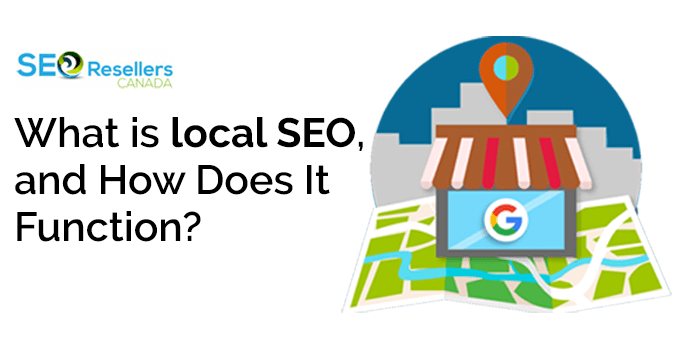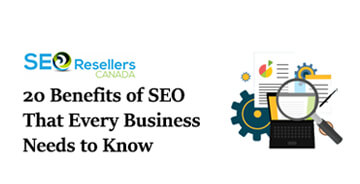Remarketing is an ingenious concept that has become extremely popular when it comes to selling products. The idea is to serve ads to users who have previously visited a website to buy a product or service but didn’t follow through with a purchase. By merely checking out the product and brand, a user has demonstrated interest.
Remarketing taps into the user’s interest by targeting them by running ads on various platforms such as YouTube, search engine results, third-party websites, and even apps. In this way, remarketing gives companies a second chance to convert their leads or retain their customers through online campaigns or ads. Many ad platforms make the most of remarketing, including Google, Facebook, and even Outbrain.
1- Why Is Remarketing So Important?
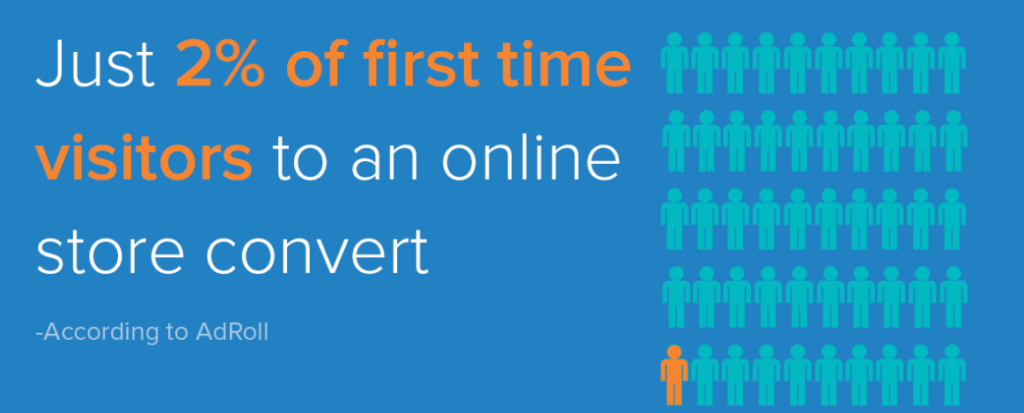
AdRoll, a popular web advertising platform, says that only 2% of users will make a purchase when they first visit your site. Lead conversion ultimately depends on the stage of the buyer’s journey. The first stage is to create awareness about your brand and the journey only picks up from there. Remarketing is a great way to bolster brand awareness and start the buyer’s journey from becoming aware of the brand to becoming a loyal customer.
Most people tend to explore their options before choosing a service provider and don’t buy immediately. When it comes to expensive products and high-end services, they refrain from making compulsive purchases. Instead, they see what you offer and then visit your competitors to weigh the pros and cons of each company before buying.
According to Moz, the paths to the buyer’s journey have gotten significantly longer, as shown by the picture below.
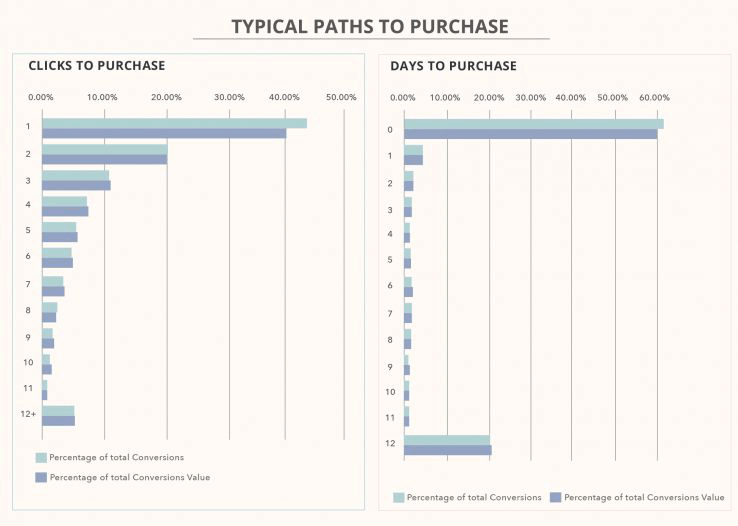
Businesses also have to contend with the problem of distraction. Most online users have fleeting attention spans and easily get distracted for several reasons – an incoming phone call, watching a Facebook video, checking out social media, and stopping to answer an urgent mail. Whatever the reason – they are now gone.
Remarketing gives businesses, both big and small, many opportunities to reach their audience once the user has left the site. Thanks to novel concepts like big data and machine learning, companies like Google and AdRoll let you know who your customers are and what they are looking for. This knowledge lets you customize your ads, from a personalized message right down to the exact times when the ads should be displayed.
Remarketing lets you focus your resources and efforts on customers who have already shown some kind of interest in your product through their previous behavior. Google and Facebook put the power of remarketing in your hands, letting you focus on users who abandoned the registration process, purchase, or subscription, to come back and finish the process.
If they checked out your landing page and investigated your products, or even added a few products to the shopping cart, if they haven’t completed it, remarketing nudges them to resume the process and follow through with your desired action.
In the highly competitive digital marketing ecosystem, it is much easier to retarget customers and convince them than to chase after users who don’t know you at all.
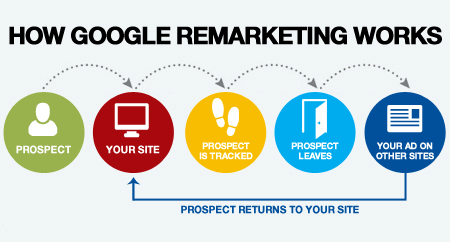
2- Four Principle Reasons why PPC Remarketing is Effective
2.1- Increases Familiarity
It is human psychology to trust things that they continuously see around them. As users become increasingly familiarized with your brand, they will feel closer to it.
2.2- Increases Consistency
Consistently showing your product and ad to users who have previously shown interest in it will be motivated to follow through with action. You could argue that consistency is one form of persuasion.
2.3- The Intent is Already Established
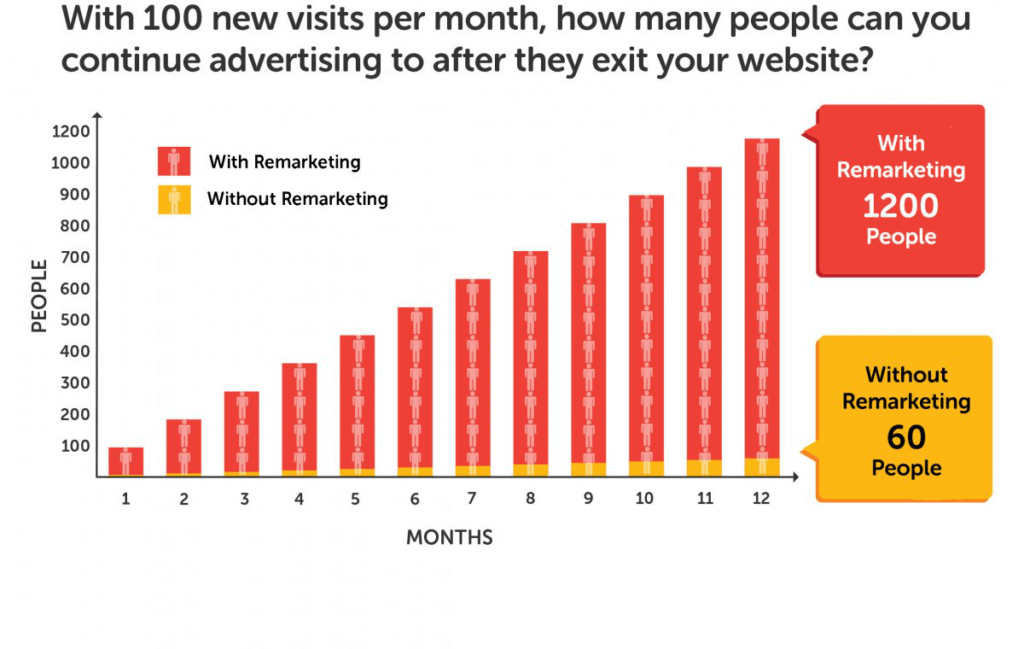
Previously, businesses had to find users that are willing to buy their product. Remarketing lets you dedicate your advertisement to clients that have shown intention, desire, and necessity. If they researched your product, there is a high chance they have assessed other options, read about the product from comments, or discussed it among friends. Ironically, they get distracted in the process of research and the first few companies that they encountered almost escape their minds. Remarketing lets these companies re-emerge into their mind and complete the purchase.
On average, you can increase 100 new visits to your website every month with remarketing.
2.4- Knowledge about Potential Clients
Based on the customer’s behavior, you now know what products they need, what they prefer, size, color, etc. Before the advent of this technology, marketing almost always involved a lot of guesswork that usually wasted money and effort. Remarketing lets you take much of the guesswork out of the equation.
3- Reasons why Remarketing is Beneficial
Here are 4 proven reasons why remarketing will make your business ridiculously successful in 2020 and beyond.
3.1- Let’s You Save Money
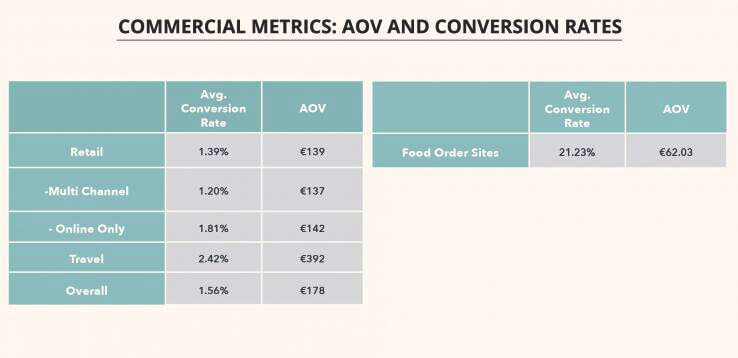
Although remarketing is not free – but then again, nothing ever is – compared to your other options, it is dirt cheap. Display ads will cost you a tiny $5 to $10 for 1,000 views. This isn’t very expensive at all. Display ads are much cheaper than search ads in extremely competitive niches, sometimes by up to a factor of 100! And although the click-through rate for display ads is extremely low (at about 0.2%), the resulting conversion rate is as good search adds in many industries.
Remarketing mostly operates on a cost per click business model, as well as CPA (cost per acquisition) and CPM (cost per impression). All these different models give you more control over your bids and how you manage your budget to the specific campaign or remarketing list.
Even then, the average conversion rate for search traffic is abysmally low at 1.6 for e-commerce websites.
Once again, the idea is to refamiliarize (or reintroduce) your brand to the customer, not necessarily getting them to click. The more you hammer home the idea that your product fits their specifications, the greater is your chance at securing a sale.
Not using remarketing is a lost opportunity where you throw your potential leads to your competitors for free. Remarketing lets you recapture your audience and justified the money you spend to initially get them to the site, which would otherwise have been wasted.
Remarketing gives you multiple chances to make a new sale! The trick is to create engaging, user-friendly ads with a powerful image and a relevant message. This should bring them back for a new purchase.
3.2- Higher Leads and Conversions
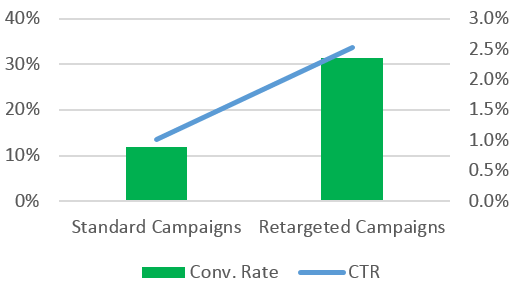
Customers who have previously shown interest in your product are like low hanging fruit. You want to make sure you’re converting them every chance you get. It is a common trend for businesses to spend enormous effort and money to get people to visit their website, only for them to make a purchase elsewhere. If done right, remarketing could help you improve your lead conversion rate by a significant margin, sometimes more than 50% as seen in the graph below.
3.3- Higher Visitor Engagement
It is important to convert your users into more engaged advocates and fans so that you can grow your following. If your visitors are not spending enough time on your website, you can use remarketing to craft personalized, compelling messages to attract them. If done right, remarketing will help you sell more of what people want from you.
3.4- Increase Your ROI
In an ideal world, your customer would search for your website, never get distracted, spend enough time exploring your product pages, convert, buy, and become a repeat customer forever. However, things aren’t that simple in the real world.
Why would you spend your time and money on getting people to visit your website just once and never again? That’s ironic. You want to maximize the value of those users who drop by the first time around, whether it is via search, ads, or social media. Retargeting lets you leverage the money you spent in acquiring your audience.
4- Example of Remarketing
Here’s a fictional example of remarketing. John visits Amazon to casually search for a few products, looks at a few sunglasses, but doesn’t follow through with a purchase. Later on, John visits another website to check up on the latest gossip on celebrities. John then sees an ad from Amazon featuring the same or similar sunglasses to the ones he was previously looking at the other day.
The remarketing ad reminds John of those sunglasses he was interested in. This increases the probability that John will go back to the website and complete the purchase he didn’t previously, and even buy a few similar products.
5- How Remarketing Works
Let’s get into the gist of how remarketing works in AdWords. It’s not difficult to set up a retargeting campaign for your product or website. The first time you create a campaign with Google (or some other network provider), you will receive a small piece of code known as a pixel tag that can be added to your website.
Whenever a new user visits your website, the code will create an anonymous browser cookie and will be added to your retargeting list. When the same user visits another website that hosts ads from your ad network provider, they will see your ads. This will continue to happen as long as you have an active campaign running.
6- The Importance of Remarketing Pixel Tags (google_conversion_id)
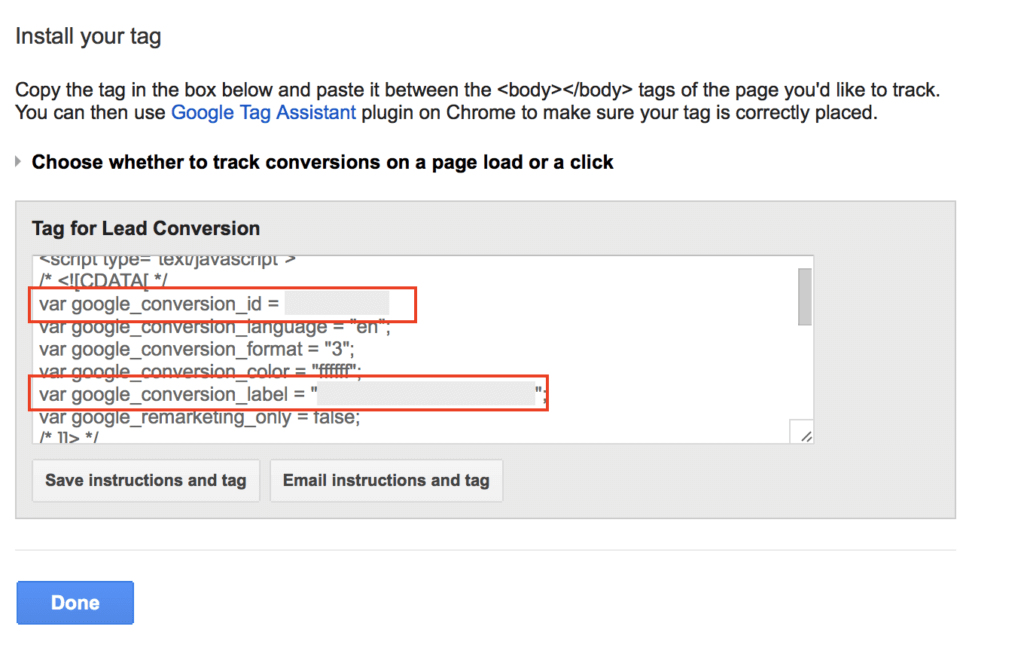
Without getting into the technicalities of programming, pixel tags are small bits of code on a website that uses cookies to add visitors. Think of cookies as small breadcrumbs left behind by website visitors. Each of these visitors is assigned a special, yet anonymous ID to track their website activity. Remarketing works by accessing the visitor’s ID and saving it to relevant remarketing lists.
Every time you create a new ad on Google, Bing, or Outbrain, make sure to add their pixel and to start creating your remarketing lists. Here’s how remarketing works in AdWords:
- Log in to your AdWords account
- Click on the spanner and navigate to “Audience Manager”
- Once there, select “Audience sources” to see the details for your AdWords tag
- Navigate down to AdWords Tag and click on “Set up Tag”
- Copy the google_conversion ID. It can be seen in three different places. Copy only the numeric value (not the AW- bits) and paste them directly into Link
- Add this code to your website for remarketing campaigns
7- Understanding the Remarketing List
A remarketing list is a list of visitors who perform a certain action on your site. For example, the homepage remarketing list contains information about all (or certain) visitors who visited your homepage over a certain period. When the user visitors your homepage, the cookie which is specific to their session is added to the remarketing list.
This then allows you to remarket to the list of people who have visited your homepage. You can custom tailor the remarketing list and craft an appropriate ad message for each list.
8- Is There Ever a ‘Right’ Time to Use Remarketing?
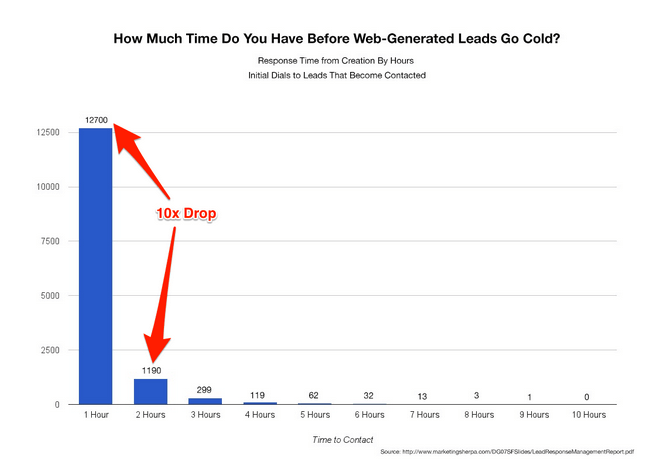
When it comes to remarketing, timing is very important. Some marketers, in a bid to cast the widest net possible, prefer to run remarketing campaigns for all users who visit their website but didn’t convert. But more savvy markers opt for a more personalized and advanced approach to remarketing. They can fine-tune their remarketing campaign to fit a certain criterion.
For instance, the remarketing campaign activates only for visitors who land on certain pages of the website such as the product page, or those who make it to the “Check Out” page. You could even serve ads for users who only visit your website at a certain time of the day or year, for example, during a special sales season.
Word of advice: make sure to engage your users within 1 hour of them leaving your website.
As you can from the graph above, you have a short window of about 1 hour to re-engage your users before they lose interest.
These strategies depend entirely on your overall goals and what you need at the time. It is not advisable to overdo remarketing, for instance, you don’t want to run the risk of annoying potential customers by hammering them with too many ads. A good idea is to put a limitation on how many ads can be seen by certain users, for instance, no more than two to three ads per day.
9- The Best Platforms that Offer Remarketing Services
There are many different remarketing platforms, each with its pros and cons. Here is a list of the better ones.
9.1- Google AdWords Remarketing
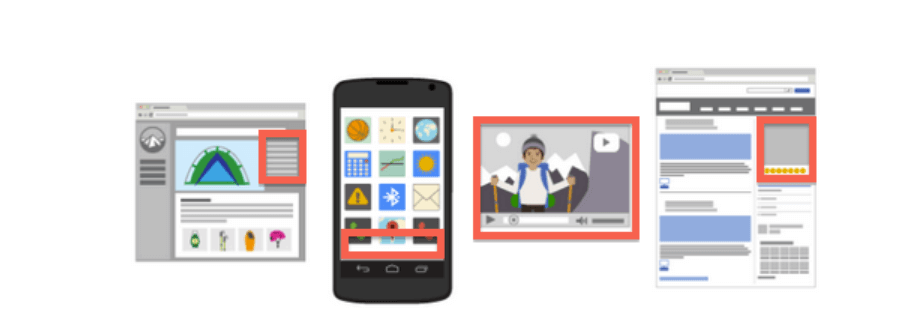
Google simplifies retargeting for companies thanks to a simple sign up process. AdWords’ retargeting platform lets you engage your users when they visit websites that are part of Google’s network (also known as Google AdSense). This includes YouTube, Android apps, and over 2 million websites that are part of AdSense. Google offers different pricing models such as CPM (cost per thousand impressions), CPA (cost per acquisition), and CPC (cost per click).
You’ll need to create a remarketing list to decide which users are to be targeted with these ads; are you looking at all users of your website or users of certain areas of the website? The search engine giant makes it easy.
9.1.1- How Google Does its Remarketing:-
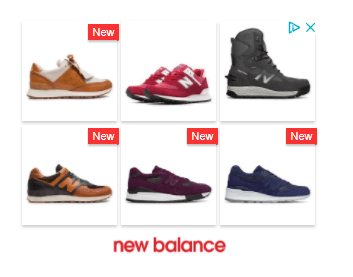
i) Static Remarketing
Your ad follows customers around the web with the help of a cookie after they visited a website. This allows customers to receive an appropriate ad that fits their behavior.
ii) Dynamic Remarketing
This allows businesses to serve ads to the specific items that the user previously visited. Then the user gets a dynamic banner that contains products they previously visited.
iii) Search Ads
Google uses search keywords as criteria to create suitable remarketing lists. For example, markets can use the keyword “restaurant in Vancouver,” so when a user goes on Google and types in this keyword, Google will show them your ad.
iv) Email List Remarketing
This requires you to upload a list of your customers’ Gmail addresses. Email remarketing lets you serve ads to their Gmail account.
v) Video Remarketing
If you want to re-engage previous viewers who saw your video or subscribed to you, then try using video remarketing.
The best thing about Google is that you don’t have to commit to a minimum budget, and setting up your remarketing list is free of cost. Plus you also get access to Google’s round the clock support if you want to ask them a few questions. If you’re new to remarketing lists, then Google AdWords should be your platform of choice to get familiar with the concept.
Here’s an example of a remarketing ad done on Google AdWords.
9.2- ReTargeter
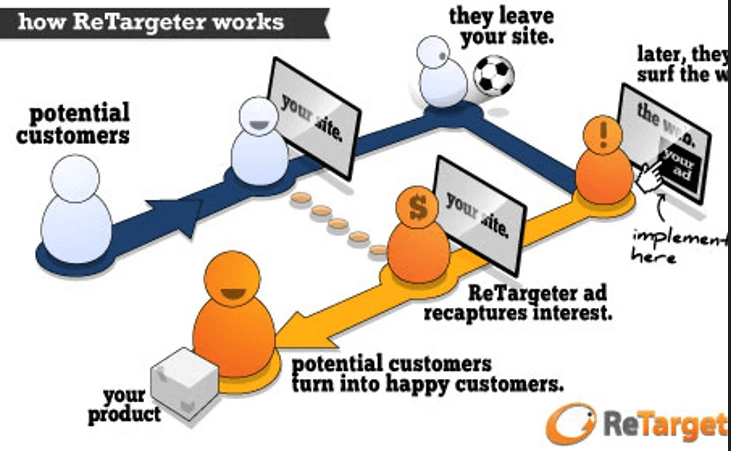
Although ReTargeter set up in 2009, it has already gained plenty of traction with big clients like Hireology and Zendesk. ReTargeter has access to a wide range of big sites with lots of traffic. Its network includes Google, Bing, Yahoo, Twitter, Rubicon, and many more.
For sites with fewer than 40,000 unique visitors, advertisers can use Retargeting for Facebook. For websites with more unique visitors, they can use a Custom Audience, CRM Retargeting solutions, and a dedicated account manager.
The base package starts at $500 per month. ReTargeter has a large number of tools to choose from. Things start getting serious once you reach $2500 per month. At this level, ReTargeter lets you focus on users based on more specific data such as geographic information, demographics, and contextual data.
9.3- AdRoll

If you want to take things up a notch and expand your search, then the AdRoll is your friend. AdRoll is a larger resource than Google because it has partnered with Facebook Exchange, Bing, Yahoo, Twitter, and Google itself. This accounts for at least 95% of the entire internet. Imagine the opportunities this platform provides you.
AdRoll doesn’t require you to commit to a minimum budget. They recommend their users to test out with a small amount of $25 and take things from there. The $25 will give you an idea about how to set things up and you may need for your campaign.
The best part about AdRoll is that it has a clutter-free interface that is easy to use and lets users customize various parameters such as ad management, report generation, and customer segmentation.
Once you reach a specified amount (such as $5,000), then AdRoll gives you access to their phone and online support and even gives you your very own dedicated account manager and some extra privileges such as A/B testing.
9.4- SiteScout
SiteScout has many advertising solutions and a large network, with Bing and Google being some of the more tantalizing ones. SiteScout lets you create an audience list, obtain the pixel, and include it on your homepage. The list starts getting populated once a user visits your specified landing page. According to SiteScout, you need a minimum of 1000 unique IDs on their list before running your campaign.
The more traffic you get, the larger your audience list. You can increase search traffic temporarily by using search ads and organic search. In mobile campaigns, the list is based on the unique Device ID. You can create a list yourself or let SiteScout collect device IDs using its Audience Capture feature.
SiteScout is free to register but has an imposing minimum deposit of $500. They also use a CPM model but have a feature that lets you define CPA or CPC goals. Their network includes Google, Bing, Yahoo, and other important websites.
9.5- Perfect Audience
If you just launched your business and are searching for a quick way to bolster sales, then you may find the Perfect Audience to be a powerful ally. They offer solutions that include web, dynamic, mobile, and even Facebook. In terms of audience segmentation, they offer diverse choices that let you fine-tune your remarketing list. Want to only target users who clicked on a specific product? Done. Want to target only those subscribers from your mailing list who checked out your email? Easy.
Perfect Audience lets you use display retargeting through a large network that includes Google, Rubicon, and, Bing, Facebook, Twitter, and more. You can sign up for free and check out their 14-day free trial. Charges are based on their CPM model.
Feeling optimistic about retargeting ads? Contact SEO Resellers Canada today for a consultation with a digital marketing expert to see which remarketing strategy is best for you!



















